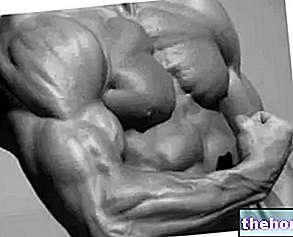Premise
The following indications are for informational purposes EXCLUSIVELY and are not intended to replace the opinion of professionals such as a doctor, nutritionist or dietician, whose intervention is necessary for the prescription and composition of PERSONALIZED food therapies.

Hiatal hernia
The hiatal hernia is a pathology caused by the ascent of a portion of the stomach from the abdominal cavity to the thoracic cavity, through the esophageal diaphragmatic hole; the hiatal hernia affects up to 15% of Italians and, among the most frequent comorbidities, the disease appears from gastroesophageal reflux (GERD). There are three types of hiatal hernia: sliding (90% of cases - it is closely related to GERD), which affects the gastroesophageal junction, rolling (rarer and more dangerous) affecting the bottom of the stomach, and mixed.
The hiatal hernia is often asymptomatic and its diagnosis is frequently occasional; in the other cases, its correlation to gastroesophageal reflux disease assimilates various symptoms, for which they may appear: heartburn and retrosternal chest pain, regurgitation, bitterness in the mouth , intense salivation and hoarseness.
Hiatal hernia worsens with pregnancy and appears to be closely related to visceral obesity; therefore, weight loss in overweight subjects is often associated with a reduction in symptoms or slipping episodes (perhaps due to the decrease in intra-abdominal pressure) and the risk of more serious complications.
NB. Probably, some sports activities are able to promote the onset of hiatal hernia; this is the case of weight lifting or bodybuilding, in which the Valsalva maneuver is used (sometimes consciously) during the execution of the gesture.
Diet for hiatal hernia
From a nutritional point of view, it seems that the "hiatal hernia is strongly correlated with the deficit of fibers and liquids. Constipation and (consequently) an inadequate postural attitude during the evacuation (once again the" hiatal hernia correlates with "increased intra-abdominal pressure). Summarizing, from a statistical point of view, the "hiatal hernia occurs with MORE frequency during pregnancy, or in conjunction with visceral obesity, constipation and BIG BUNS (which cause an unnatural dilation of the stomach); it follows that the diet for the" Hiatal hernia should boast characteristics of:
- Nutritional balance / energy intake weighted to any special physiological conditions (pregnancy) and to the subject's body mass index (if obese, the diet MUST be aimed at weight loss, therefore probably low calorie)
- Prevention / treatment of constipation
- Marked distribution of meals
- Reduction of food volume and digestive effort at dinner
Other useful tips are:
- Limitation of clothes that are too tight
- Thorough chewing
- Avoid practicing physical-motor activity after meals
- Avoid smoking
- In the presence of GERD, apply ALL the precautions of the diet for gastroesophageal reflux disease (see related article): no to spices, no to alcohol, no to excessively large meals, no to excessively fatty meals, no to foods with insufficient or prolonged cooking, etc.
THERE ARE NO FOOD SUPPLEMENTS USEFUL TO THE DIET FOR HYATAL HERNIA.
Hyatal Hernia Diet Example
SUITABLE FOR:
- Overweight worker, has lunch with a sandwich and gorges himself in the evening; does not practice motor physical activity
Hiatal Hernia Diet Example - Day 1
Hiatal Hernia Diet Example - Day 2
Hyatal Hernia Diet Example - Day 3
Hiatal Hernia Diet Example - Day 4
Hiatal Hernia Diet Example - Day 5
Hyatal Hernia Diet Example - Day 6
Hyatal Hernia Diet Example - Day 7



















-nelle-carni-di-maiale.jpg)








